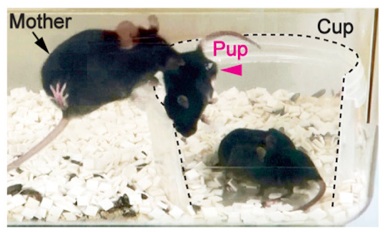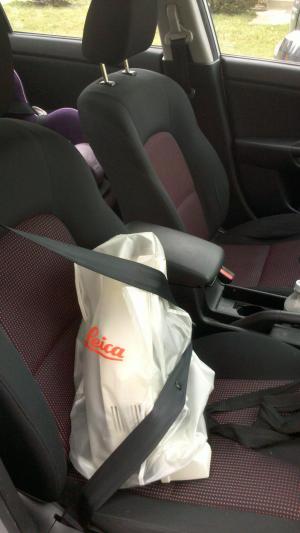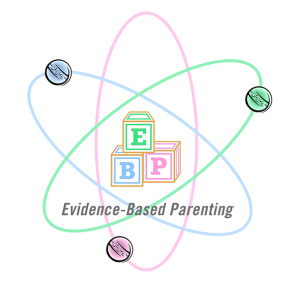Curious what a typical day is like for a working scientist and mother (SciMom)? This is a run-down of a typical Thursday for me.
__________________________________________________________
The Short Version:
Morning at home- wake, nurse Nemo, get Mabel washed up and dressed, get ready for work, kiss hubby and baby, drop Mabel at preschool, and head off to work.
Day at work- try to cure cancer, work on poster for upcoming national meeting, lunch meeting, rush home.
Evening at home- nurse baby, cook dinner, get Mabel ready for bed while Mac takes care of Nemo, read bedtime stories, sing lullabies, say prayers, tuck in Mabel, nurse Nemo, tuck in Nemo, tuck Mabel in again, and again, and again until she’s finally asleep, take 5 min for myself, go to bed.
The Long Version:
This is a typical Thursday. Wednesdays and Thursdays are my meeting-heavy days.
Sometime between 6 and 7am: Nemo wakes, bring him into bed and nurse.
7am: Alarm goes off, Mabel storms in (since she has one of these and isn’t technically allowed out of bed until it turns green)
7:40am: Everyone out of bed. Get Mabel washed up and dressed for school while Nemo plays.

Playing instead of getting ready!
8am: Get myself ready for work while Mac gives Mabel and Nemo breakfast.
8:30am: Head out the door.
8:45am: Drop Mabel at preschool and head to work (as a scientist at a biotech/pharma company).
9:15am: Drive around the parking lot praying that someone left at a random time and there is a convenient parking spot, end up parking in the boondocks.
9:20am: Sit in the car and put on my makeup (crucial, see here).
9:30am: Sit down at my desk. Turn on computer. Check emails, respond to emails, read abstracts from journal alerts, etc. If there’s time, check my personal email, Facebook, LinkedIn, etc. Check in with my technician regarding her experiments for that day. Grab a cup of coffee (there is never enough coffee).
10am: Tumor Scientist Meeting- all the Oncology Department’s scientists meeting with our VP of research. Mostly these meetings cover research topics in a lab meeting style, and we all present several times a year. Other times these are administrative, discussing space utilization, equipment purchases, reports on interesting meetings, etc.
11:30am: (as long as my 10am meeting doesn’t run until noon) Pump. I’m still nursing Nemo, and I was nursing Mabel when I started this job. Thankfully there is a well-equiped Nursing Mother’s Room right around the corner from my office.
12:15pm: Department Meeting- this is a standing lunch meeting for anyone/everyone doing oncology-related research to present their research. Scientists and technical staff take turns presenting once a year. It’s a great opportunity to learn what other departments are working on, and get a chance to present to people you wouldn’t otherwise get to hear from.
1:30pm: Back to my office- read papers, analyze data, plan experiments, spend time in the lab, meet with my technician to discuss results and upcoming data, work on presentations, respond to emails.*
3pm: Pump again.
3:30pm: Coffee- either with a colleague in the kitchen, or back at my desk (If it’s at my desk, I might read non-science news, check personal email, Facebook, etc.). Get some more work done*
5pm: Start thinking about leaving. Save documents, print stuff, wash my coffee cup, shut down equipment, etc. I don’t actually get in my car to leave until 5:20pm or later.
5:45pm: Get home. Wash hands. Unpack any perishables (uneaten lunch, pumped milk, etc.), nurse Nemo while Mabel climbs on me and demands attention and Mac walks the dog (definitely looking forward to Spring and the time change, which means it’s light enough and warm enough for us to walk as a family).
6:15pm: Start making dinner.
6:45pm: Eat dinner.
7:15pm: Take Mabel upstairs to get ready for bed while Nemo plays and Mac does the kitchen cleanup.
7:30pm: Read bedtime stories with Mabel.

Bedtime stories.
7:50pm: Sing songs (under the stars thanks to Santa) with Mabel and then tuck her in for the night.
8pm: Nurse Nemo for as long as he stays awake. Sometimes sit holding him for an hour just because it’s the only time of day I get to be with him without Mabel competing for my attention, and because I really miss holding him all day.
8:30pm: Shower and get mostly ready for bed.
9pm: Back downstairs for some time on the computer, in front of the TV, with a cup of coffee, do laundry, other chores, maybe check work emails. Let the dog out one last time.
10:30/11pm: Brush teeth and get to bed. Mac and I head to bed anywhere from 10pm to midnight. We really try to be in bed by around 10:30pm, but that seems to rarely happen. Once in bed, we’ll read (an actual book) or spend some time on our phones (playing each other in Words with Friends, checking email, Facebook, etc.), turn them off and then have some actual conversation that isn’t interrupted by little kids.
11pm/12am: Lights out.
12am to 7am: Get woken up at the whims of our children for pacifiers, trips to the potty, dirty diapers, runny noses, lost blankets, snuggles, etc. Sometimes the dog gets in on the action too and barks at a random sound or insists on being let out at 3am. It’s never enough sleep, and it’s never uninterrupted. Potty training and a little brother (Nemo is in our room in a pack n’ play, so I think she feels she’s missing out being in her own room) have really interfered with Mabel’s sleep- she rarely stays in her bed all night.
__________________________________________________________________
So, that’s a typical Thursday. Some evenings I head out for book club or a Mom’s Night Out, but those are only once or twice a month. It’s never enough time, it seems. I miss my kids desperately when I’m at work, and just can’t seem to get enough of them in the evenings. Sometimes the bedtime routine runs long and bedtime is later and I enjoy it because it means more time with them (other times I don’t enjoy it because I need 5 minutes to myself!).
So, that’s my Thursday- a day in the life a SciMom.
The big question- have I achieved work-life balance? The answer- it feels like it, for three reasons.
One, most days I don’t get much time with my kids; however, since they are home with Mac, I feel like they are getting all the love, attention, and nurturing they need (or at least as much as I could give them if I were the one at home). If they were in daycare from 8:30am to 5:30pm, I’m not sure I would feel the same.
Two, Mac takes care of so much during the weekdays, that I can really focus on quality family time when I’m not at work. I know if Mac worked full-time outside the home it would mean our evenings and weekends would be swamped with errands and chores and oil changes and all the other business of life.
Three, my work is pretty flexible (both my company and my supervisor). There are times I have to go in early or stay late, take work home, etc, but there have been more times I’ve worked from home (in bad weather), used flex time (when Mac has an on-site job), left early (for doctor’s appointments, swim class, or long weekends), or come in late (TThF when I drop Mabel at preschool). Combine that with my company’s family-friendly events and parties several times a year that means Mac and the kids can come visit me at work, and plenty of paid holidays (hello- week off between Christmas and New Years!!) and it’s not bad. Have I missed precious moments with my kids to be at work? Yes. Was it hard to be away? Yes. Is it unavoidable? Yes. Is it frequent? Thankfully, no. So it feels balanced.
The day to day can seem harried and rushed, but over the long-term, it feels like it’s working out. I’m lucky to be able to have a job I enjoy, a family I love, and a husband who loves me.
_______________________________________
*As I mentioned above, Thursdays are meeting-heavy, with two standing meetings. I generally don’t plan experiments for Thursdays for that reason. When I’m not in meetings (seminars, lab meetings, working groups, etc.), the main tasks that occupy my time are: read papers, analyze data, plan experiments, spend time in the lab, meet with my technician to discuss results and upcoming experiments, work on presentations, respond to emails, attend online seminars, administrative tasks (like approve time cards and purchase requisitions, complete online mandatory trainings, etc.).
My company has an open-door culture. Unless people have to take a phone call or have a one-on-one meeting, doors are always open and people are always free to be interrupted. Most of the time this is good, but sometimes it can make it hard to get stuff done (I never have more people come to my office than when I’m attending an online seminar!). So I’m routinely interrupted by my technician who has a question or needs a hand with something in the lab or my supervisor who has something to tell me.



















